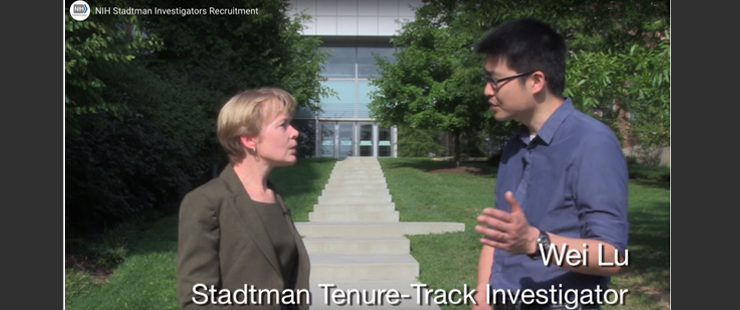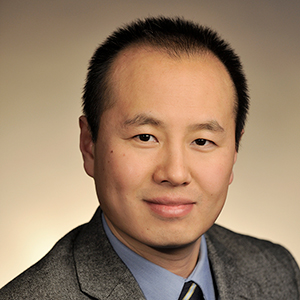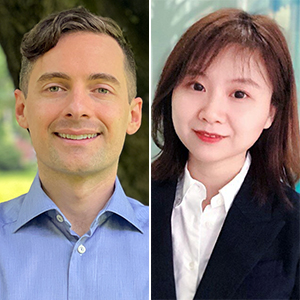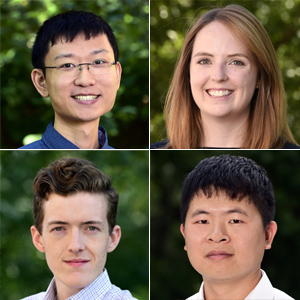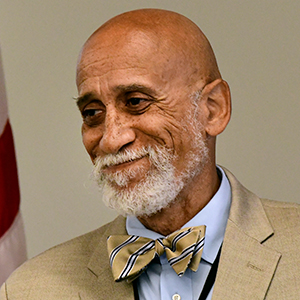Benedict Anchang, Ph.D., and Marcos Morgan, Ph.D., both National Institutes of Health (NIH) Earl Stadtman Tenure-Track researchers (see sidebar), were recently welcomed to NIEHS by Scientific Director Darryl Zeldin, M.D.
Anchang is a statistician, bioinformatician, and computational biologist whose primary appointment will be in the NIEHS Biostatistics and Computational Biology Branch. He has a joint appointment at the National Cancer Institute.
Morgan, head of the Male Reproduction and RNA Biology Group, has held positions at the European Molecular Biology Laboratory in Rome, the European Bioinformatics Institute in the United Kingdom, and the Medical Research Council Centre for Regenerative Medicine at the University of Edinburgh.
Using computation to understand drug resistance
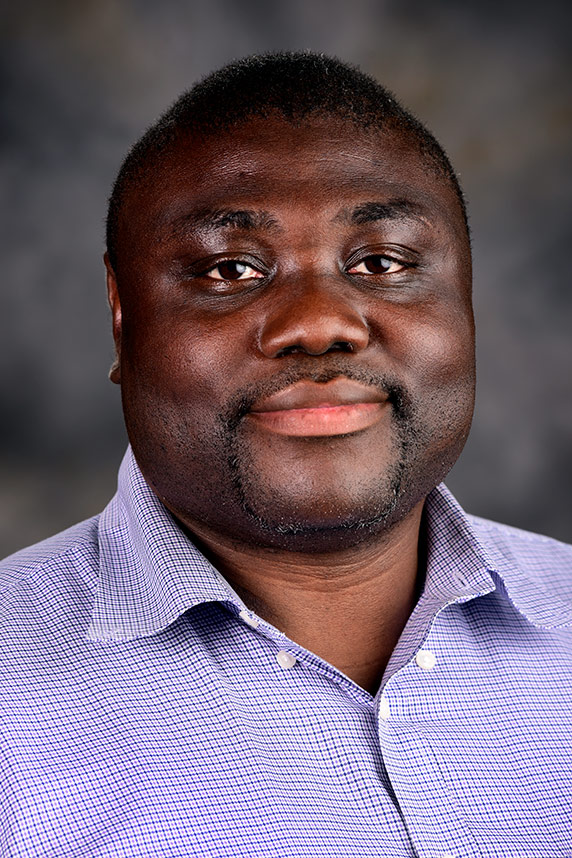 “It’s a big deal, coming from a university to a research institution,” Anchang said. “It gives me an opportunity to worry less about teaching and focus on my research.” (Photo courtesy of Steve McCaw)
“It’s a big deal, coming from a university to a research institution,” Anchang said. “It gives me an opportunity to worry less about teaching and focus on my research.” (Photo courtesy of Steve McCaw)Anchang’s research focuses on applying computational models to study the role of intratumor heterogeneity in relation to drug resistance. Intratumor heterogeneity refers to cells within a tumor that have distinct characteristics.
At NIEHS, he is looking forward to applying his computational models using single cell data to biological processes, including studies of oncology, toxicology, and immunology.
Most cancer therapies were developed by generating cancer cell lines and developing a drug to fit the tumor — working from the cell line and applying it to the individual. Over time, the drug often stops working and the cancer comes back, because the drug is not effective against all cell characteristics within the tumor.
“I am approaching the problem the other way — starting with collecting single cells from individual patients and applying what we learn from each cell to the patient as well as the larger population,” said Anchang. This is known as single-cell analysis.
“With single cell measurements, you can potentially know exactly how the disease progresses, then find a way to target and kill the cells. This is a way to really do individualized medicine.”
He addressed this computational challenge by developing what is called a drug-nested effects model, which can account for tumor heterogeneity in determining the best combination of drugs for an individual’s tumor.
A native of Cameroon, Anchang received his Ph.D. in bioinformatics at the University of Regensburg in Germany. Before coming to NIEHS, he spent six years at Stanford University, first as a postdoctoral researcher and then as an instructor in the radiology department.
How does RNA modification affect gametes?
 “I am extremely excited to be part of NIEHS’s highly regarded reproductive biology group,” Morgan said. “It’s an opportunity to pursue my long-term research goals with outstanding institutional support.” (Photo courtesy of Steve McCaw)
“I am extremely excited to be part of NIEHS’s highly regarded reproductive biology group,” Morgan said. “It’s an opportunity to pursue my long-term research goals with outstanding institutional support.” (Photo courtesy of Steve McCaw)Morgan’s research seeks to better understand how the production of gametes — the precursors to eggs and sperm — is influenced by RNA processing. Modification of RNA is directed by proteins called terminal nucleotidyl transferases (TENTs), which are crucial to the cells as they mature into oocytes or sperm.
Using mouse models, Morgan depletes selected TENTs so that they can no longer modulate RNA. This allows him to study different types of infertility issues.
At NIEHS, he will explore the role of uncharacterized TENTs and develop methods to detect RNA modifications at a single-cell level.
“I want to provide a better mechanistic understanding of RNA regulation,” he said. “This may allow us to understand the nature of various genetic or environmental causes of pathologies.”
Morgan is a native of Argentina. He received his Ph.D. in RNA biology at the International Centre for Genetic Engineering and Biotechnology in Trieste, Italy.
Morgan and Anchang join three other Stadtman researchers at NIEHS.
- Alexandra White, Ph.D., head of the Environmental and Cancer Epidemiology Group.
- Chandra Jackson, Ph.D., head of the Social and Environmental Determinants of Health Equity Group.
- Robin Stanley, Ph.D., head of the Nucleolar Integrity Group.
(John Yewell is a contract writer for the NIEHS Office of Communications and Public Liaison.)





